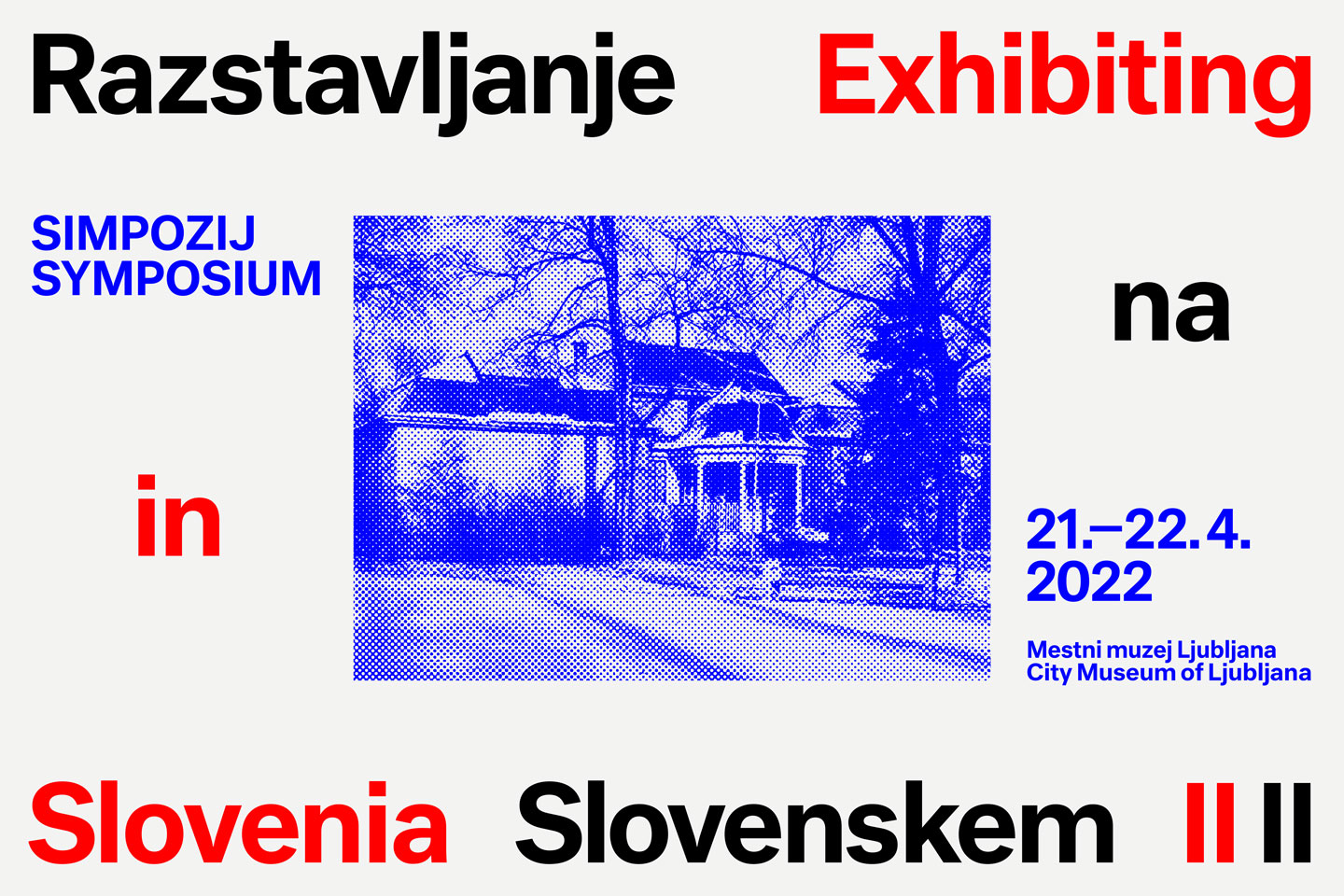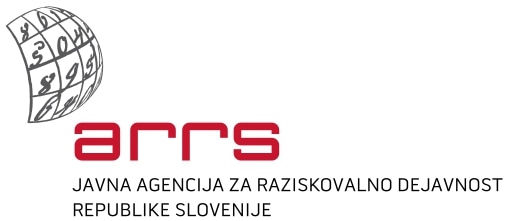
EXHIBITING OF ART AND ARCHITECTURE BETWEEN ARTISTIC AND IDEOLOGICAL CONCEPTS. CASE STUDY OF SLOVENIA, 1947–1979
Project presentation
|
UL member implementing the project |
UL Filozofska fakulteta |
|
Project code |
J6-3137 |
|
Project title |
EXHIBITING OF ART AND ARCHITECTURE BETWEEN ARTISTIC AND IDEOLOGICAL CONCEPTS. CASE STUDY OF SLOVENIA, 1947–1979 |
|
Project duration |
1. 10. 2021 - 30.9. 2024 |
|
Annual volume |
1,57 FTE |
|
Project Manager |
Beti Žerovc |
|
Science and the field |
Humanistične vede / Kulturologija |
|
Participating research organisations |
The main topic of the project is the research of the history of art exhibitions in Slovenia in the context of second Yugoslavia. The selected period is defined by two prominent exhibitions that symbolically mark this stretch of time, since they reflect their historic situation through their organisation, selected works of art, and reception. At the same they both deserve attention also as standalone artistic manifestations. The first one is the Exhibition of Soviet Painters, which was set up in 1947 in then still not officially opened venue of the Museum of Modern Art in Ljubljana. The exhibition, which travelled across Yugoslavia and countries of the Eastern Bloc, can be seen as a valuable document for the research of the short period when Yugoslav art tried to emulate the Soviet art model. That ended in June 1948 when the cooperation between the two countries was formally interrupted with the expulsion of Yugoslavia from the Cominform. The exhibition, which was supposed to serve as a model for the art of socialist realism, was largely dismissed by artists and critics at the time.
The second milestone is the exhibition Slovenian Fine Art 1945–1978 held in 1979, and organised in the cooperation of the Museum of Modern Art and the Architecture Museum of Ljubljana. With the attempt of cataloguing the art of the period in question and with the specific selection of the works, the exhibition served as a survey of Slovenian modernist art and symbolically prepared the terrain for the new chapter. The death of the President Tito in 1980 was followed by radical political changes. Alongside this, the period of the 1980s also brought important changes to the art discourse and artistic activity, as well as new developments in the field of exhibitions and institutionalisation of art.
The impact of the social and political situation and changes in the understanding of Slovenia's own national entity and its position in the context of the federation, and further in the international context was profoundly felt in the organisation of large-scale international, state-wide, and national exhibitions in the framework of the former Yugoslavia. An insight into the structure of these events and their analysis can therefore contribute to new findings in the understanding of the studied period and its art. With the critical and in depth review of the exhibitions we will therefore try to answer the following questions:
- How do exhibitions reflect changes in politics and society?
- How do exhibitions co-shape the presentation of Slovenian art abroad (particularly in the context of Yugoslav art)?
- What kind exhibitions of foreign art come to Slovenia, how are they received and what is their impact?
- What is the comprehensive meaning of exhibiting for the development of Slovenian art and culture?
The research will thus bring some concrete answers about the situation in Slovenia, also in the context of the broader Yugoslav umbrella. Broadly speaking, it will contribute to the understanding of the role of exhibition as a medium in artistic and social processes as well as the impact of political frameworks on the medium of exhibiting, and through this prism also on the art in general.
Assoc. prof. dr. Beti Žerovc, PhD (FF UL, project leader) is a professor at the Department of Art History at the Faculty of Arts, University of Ljubljana. She curated 29th Biennial of Graphic Arts The Event (2011), coordinated academic conferences, exhibition projects, the multiannual event cycle Umetnost za družbeno rabo (“Art for Social Use”, Igor Zabel Association and the Faculty of Arts, from 2015) and student projects. She is involved with exhibition history both as a researcher and as a pedagogue. Her research has concentrated on the phenomena of the contemporary art curator, the contemporary art exhibition as a medium, and the changing role of art institutions. She is an author of numerous scientific studies and books: Kurator in sodobna umetnost: pogovori (Ljubljana, 2008), Rihard Jakopič - umetnik in strateg (Ljubljana, 2002) in Umetnost kuratorjev: vloga kuratorjev v sodobni umetnost (Ljubljana, 2010), When Attitudes Become the Norm; The Contemporary Curator and Institutional Art (IZA and Archive Books, 2015. Žerovc recently coedited exhibition catalogue On the Brink: The Visual Arts in the Kingdom of Yugoslavia (1929–1941) (Moderna galerija Ljubljana, 2019).
Asist. Prof. Asta Vrečko, PhD (FF UL, researcher), is a researcher at the Faculty of Arts of the University of Ljubljana and a curator. She teaches at the Academy of Fine Arts of the University of Ljubljana and the World of Art, School for Curatorial Practices and Critical Writing (SCCA-Ljubljana). Her work focuses on Slovenian and Yugoslavian art of the 20th century, art institutions, art education and history of exhibitions. She has curated several exhibitions, among others New Spaces, New Images. The 1980s through the Prism of Events, Exhibitions, and Discourses – Part 1 (with Martina Malešič, Museum of Modern Art, Ljubljana, 2016), Ties That Bind – Academy of Fine Arts in Zagreb and Slovenian Artists Between the Two Wars (Božidar Jakac Art Museum, Kostanjevica na Krki, and National Museum of Modern Art, Zagreb, 2021). She was part of curatorial team of 32nd Biennial of Graphic Arts Birth as Criterion (The International Centre of Graphic Arts Ljubljana, 2017) and Pavilion of Slovenia The Common in Community. Seventy Years of Cooperative Centres as a Social Infrastructure at the 17th International Architecture Exhibition - La Biennale di Venezia (Venezia, 2021).
Asist. Martina Malešič, PhD (FF UL, researcher), is an art historian working as a teaching assistant and researcher at the Department of Art History at the Faculty of Arts in Ljubljana. Her research involves 20th century Slovenian architecture, design, and urban planning with an emphasis on housing culture. She organises and runs research projects aimed at popularising modern architecture. She has curated a number of exhibitions, among others Streets and Neighbourhoods - Vladimir Braco Mušič and large scale architecture (cocurated by Luka Skansi and Bogo Zupančič, Museum of Architecture and Design, Ljubljana, 2016) and New Spaces, New Images. The 1980s through the Prism of Events, Exhibitions, and Discourses – Part 1 (cocurator Asta Vrečko, Museum of Modern Art, Ljubljana, 2016). In 2021 she was a member of curatorial team for the exhibition in the Pavilion of Slovenia at the 17th biennial of architecture La Biennale di Venezia, titled The Common in Community. Seventy Years of Cooperative Centres as a Social Infrastructure.
Asist. Meta Kordiš, PhD (FF UL, reseracher) is an art historian, ethnologist, and cultural anthropologist who works as a museum consultant at the NLB Institute for Cultural Heritage. Her research interest lies in the private art collections of Slovenian companies, particularly focusing on the collection of Ljubljanska banka. In addition to her consulting role, she is also a co-author and curator of the permanent exhibition at the Museum of Banking in Slovenia (Bankarium). She has an extensive background in curating exhibitions such as "The Art World of Alenka Gerlovič 1919–2010 – Alenka Gerlovič in the Partisans" (Museum of Contemporary History of Slovenia, 2019). During her tenure at the Maribor Art Gallery, she curated exhibitions such as "US, YOU, THEM. Fragments of the 1980s Alternative Practices in Maribor" (2014), "Museum of Robots" (2011), and "Elsa Oeltjen Kasimir, from family legacy" (co-authored with Marjeta Ciglenečki, 2009). In the field of graphic arts, Meta Kordiš has curated exhibitions such as "Jonathan Barnbrook, Collateral Damage" (co-curated by Jonathan Barnbrook, Museum of National Liberation Maribor and Kibla, 2008). She also curated the exhibition "Why Miss, you are as beautiful as a Poster! Poster in Ljubljana between the Two World Wars" (International Centre of Graphic Arts, Ljubljana, 2008). This exhibition was based on her book with the same title published in 2005.
Asist. Prof. Katarina Mohar, PhD (ZRC SAZU, researcher), is an art historian employed as a research fellow at the France Stele Institute of Art History, Research Centre of the Slovenian Academy of Sciences and Arts in Ljubljana and an Assistant Professor at the Department of Art history, Faculty of Arts, University of Maribor. In 2015, she obtained her PhD from the Postgraduate School ZRC SAZU. In her research, she explores 20th century art and focuses especially on Slovenian painting and sculpture in the period after World War II, in particular state commissions.
Asist. Prof. Nika Grabar, PhD (FA UL, researcher) defended her PhD thesis at the Ljubljana Faculty of Architecture (2009), was a Fulbright visiting scholar at the Columbia University, Graduate School for Planning, Architecture and Preservation, New York (2007–2009). Her work involves research of architectural heritage with an emphasis on the heritage of modernism, contextualized in the international condition. With her research she investigates the possibilities of new critical approaches and methodologies in the field of architectural history and theory as key elements for understanding contemporary architectural issues.
Asist. Miha Valant (FF UL, researcher), is a PhD student of Art History and a young researcher at the Department of Art History, Faculty of Arts, University of Ljubljana. He is researching the formation of the art system and exhibiting in the Austrian Monarchy and the Duchy of Carniola in the 19th century.
Asist. Gregor Dražil (FF UL, researcher), has completed his master’s in Art History at the University of Ljubljana, Faculty of Arts, and is currently working on his PhD thesis at the same department. He has been employed at the International Centre of Graphic Arts (MGLC) since 2018. He is researching the history of Slovenian modern art (with focus on printmaking history) and the Slovenian art system since 1945. Since 2019 Dražil has been co-leading a course for MA students of Art History at the Art History Department, Faculty of Arts.
Vladimir Vidmar (specialist adviser) is the artist director of Bank of Slovenia's Mala galerija, between 2014 and 2019 he served as the artistic director of Škuc Gallery in Ljubljana. He has an MA in Philosophy from the Faculty of Arts, and an MA in Journalism from the Faculty of Social Sciences at the University of Ljubljana. His curatorial projects include numerous solo shows (Tadej Pogačar, Lala Raščić, Fokus grupa, Mladena Stropnik, Becky Beasley, Nika Špan, Nikita Kadan, Katalin Ladik, Rossella Biscotti in Kevin van Braak...) as well as many group exhibitions. He co-curated the decennial survey of art in Slovenia, Crisis and New Beginnings 2005–2015, at the Museum of Contemporary Art Metelkova in Ljubljana. He took part in the research project on the history of institutional critique in Central and Eastern Europe Inside Out and the international exhibition project The Kids Want Communism, launched by the Museum of Bat Yam, Tel Aviv, Israel. He regularly publishes articles on contemporary art practices in art magazines, catalogues and books. Since 2016 he has been co-teaching a course at the Academy of Fine arts and Design in Ljubljana.
The project will investigate the selected exhibitions in the period between 1947 and 1979. We will be interested in what, besides the exhibited artworks, shaped exhibitions in this period. We will look behind the scenes of development of selected exhibitions. Through archival materials, interviews (where possible), existing literature and comparative analysis, and by positioning them in the context of actual social circumstances we will reconstruct the development of these exhibitions and trace the decision-making process shaping the exhibition programme in certain institutions, their financing and purpose.
I. Database and theoretical groundwork
WP 1 constitutes the backbone of the entire research and takes place for the entire duration of the project, most intensively at the beginning of the project. In part one, it will focus on the selection and research of selected exhibitions. We will gather information on exhibitions in the studied period in archives, press clipping collections and in daily press. The material compiled in will serve as the basis for the development of thematic clusters and analyses.
II. Exhibitions of Slovenian art in the framework of Yugoslav presentations abroad
In WP 2 we will concentrate on the exhibitions that presented Slovenian art as part of Yugoslav presentations. We will be interested in how the state’s ideology was translated into its foreign policy and cultural diplomacy, and how the state employed the medium of exhibition in this process. We will try to establish how strong the presence of Slovenian artists was within these pan-Yugoslav presentations and the significance of their contribution. The inevitable question that follows is how the concept of Yugoslav art developed and what place Slovenian art occupied within it.
III. International exhibitions in Slovenia
In WP 3 we will focus on the international exhibitions. International exhibitions are defined as those that featured mainly non-Yugoslav artists. Based on the preliminary research we can roughly estimate that they were (i) organised as travelling exhibitions from abroad, (ii) developed in collaboration with international institutions, or (iii) organised at the initiative of Slovenian institutions or directors.
WP 4: Synthesis of results
In the last work package we will put the collected material and analyses of studied exhibitions into a wider context of international activity and collaboration of Slovenian culture and arts with their foreign counterparts. We will try to identify the role of studied exhibitions in different periods in Slovenian cultural policy within Yugoslavia in terms of the changing social, economic, and political circumstances.
Announcements / News
V okviru raziskovalnega projekta Likovno in arhitekturno razstavljanje med umetnostnimi in ideološkimi koncepti. Primer Slovenije, 1947–1979 (J6-3137) bo v soboto, 8. marca 2025, organizirano enodnevno izobraževanje o slovenski umetnosti po drugi svetovni vojni za srednješolske učiteljice in učitelje umetnostne zgodovine in likovne umetnosti.
Likovno področje in njegovo snovanje bodo strokovnjakinje in strokovnjaki predstavili skozi prizmo fenomenov kulturne politike, likovnih zbirk in še zlasti razstavljanja. Izobraževanje vključuje tako predavanja kot obisk dveh muzejskih institucij z vpogledom v njune arhive. Več informacij je na voljo v priloženem programu.
Število mest je omejeno, zato vabljeni, da se čim prej prijavite na naslov miha.valant@ff.uni-lj.si.
In April, the City Museum Ljubljana hosted a two-day international symposium "Exhibiting in Slovenia III." The symposium booklet, including the program and abstracts, and the recordings of the presentations, have been published.
Maja Kač, Od narodotvornih fotografij podeželja do upodobitev NOB-ja. Kaj nas uči zgodovina razstavljanja, MMC RTV SLO, 20. 4. 2024, https://www.rtvslo.si/kultura/dediscina/od-narodotvornih-fotografij-podezelja-do-upodobitev-nob-ja-kaj-nas-uci-zgodovina-razstavljanja/705602.
The programme and Book of Abstracts of the international conference Exhibiting in Slovenia III that took place on 11 and 12 April 2024 at the City Museum of Ljubljana (MGML).
More information: https://igorzabel.org/en/news/2024/Exhibiting-in-Slovenia-III
Media response:
Maja Kač, Od narodotvornih fotografij podeželja do upodobitev NOB-ja. Kaj nas uči zgodovina razstavljanja, MMC RTV SLO, 20. 4. 2024, https://www.rtvslo.si/kultura/dediscina/od-narodotvornih-fotografij-podezelja-do-upodobitev-nob-ja-kaj-nas-uci-zgodovina-razstavljanja/705602.
The project leader, assoc. prof. dr. Beti Žerovc, is on a research visit at the Institute of Art History in Zagreb from April to July 2023, where she continues her research work on establishing connections between Slovenia and Croatia from the 19th century to the present day. More information can be found at: https://www.ipu.hr/article/hr/1395/studijski-istrazivacki-boravak-dr-sc-beti-zerovc-u-institutu
Maja Kač, "Da bi pošiljali umetnika na tuj trg, se ni razmišljalo. O tem je govoril samo Zoran Kržišnik.", MMC RTV SLO, 10. 11. 2022, https://www.rtvslo.si/kultura/intervju/da-bi-posiljali-umetnika-na-tuj-trg-se-ni-razmisljalo-o-tem-je-govoril-samo-zoran-krzisnik/645478
Researcher dr. Katarina Mohar (Research Centre of the Slovenian Academy of Sciences and Arts in Ljubljana) presented a part of her research on exhibitions of Yugoslav medieval frescoes at the international conference Corpus picturarum muralium medii aevi, organized by the France Stele Institute of Art History, Research Centre of the Slovenian Academy of Sciences and Arts in Ljubljana, on September 2, 2022. More information can be found at: https://uifs.zrc-sazu.si/en/news/corpus-picturarum-muralium-medii-aevi-0.
Ingrid Mager, Razstava ni le popularizacija umetnosti, Dnevnik, 5. 5. 2022, https://www.dnevnik.si/1042988419/kultura/vizualna-umetnost/urska-jurman-in-dr-martina-malesic-razstava-ni-le-popularizacija-umetnosti
Veronika Gnezda, Umetniki so nekoč razstavljali v izložbah trgovin, Val 202, 28. 4. 2022, https://val202.rtvslo.si/2022/04/umetniki-so-nekoc-razstavljali-v-izlozbah-trgovin/
The programme and Book of Abstracts of the international conference Exhibiting in Slovenia II that took place on 21 and 22 April 2022 at the City Museum of Ljubljana (MGML), and the videos of the lectures.
More information: https://www.igorzabel.org/en/news/2022/Exhibiting-in-Slovenia-II
Media response:
· Maja Kač, Kakšni so bili prvi razstavni poskusi in kako je Grohar zaporno kazen izkoristil v svoj prid. Drugi simpozij o razstavljanju na Slovenskem, MMC RTV SLO, 15. 5. 2022, https://www.rtvslo.si/kultura/dediscina/kaksni-so-bili-prvi-razstavni-poskusi-in-kako-je-grohar-zaporno-kazen-izkoristil-v-svoj-prid/625351
· Goran Dekleva, Ko Apel podobo na ogled postavi: O zgodovini razstavljanja likovne umetnosti na Slovenskem od 19. do 21. stoletja, Kulturni fokus, Radio prvi, 13. 05. 2022, https://radioprvi.rtvslo.si/2022/04/zgodovina-razstavljanja-likovne-umetnosti-na-slovenskem
· Matic Ferlan, Razstava je medij, namenjen skupnostni rabi. Druga izvedba simpozija Razstavljanje na Slovenskem, ARS, 28. 4. 2022, https://ars.rtvslo.si/2022/04/razstava-je-medij-namenjen-skupnostni-rabi/
· Valerija Intihar, Razstavne revizije, oddaja / Kreativna inšpekcija, Radio Študent, 25. 4. 2022, https://radiostudent.si/kultura/kreativna-inspekcija/razstavne-revizije
Programme and book of abstracts for international Symposium Exhibiting in Slovenia II, that will be held 21 and 22 April 2022 at City Museum of Ljubljana.
More information:
Call for participation for international Symposium Exhibiting in Slovenia II, that will be held 21 and 22 April 2022 at City Museum of Ljubljana.
More information:
Raziskovalni projekt je (so)financiran s strani Javne agencije za raziskovalno dejavnost.

